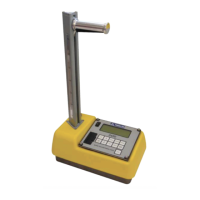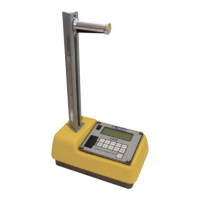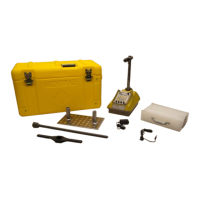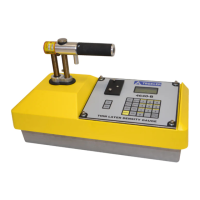SOIL AND BASE COURSE PREPARATION
Surface conditions for the test are critical to gauge performance and test
results. The scraper plate can be used to prepare surfaces that are not
smooth. Any small valleys, holes, or voids in surfaces can be filled with
sand or fine material from areas near the test site. Filling of large areas on
test surfaces should be avoided.
Placing the scraper plate on the surface to be tested, move the plate back
and forth in a small area to smooth the test site. Lift the plate to fill any
small depressions or voids present. Place scraper plate on the surface again
and press down slightly to level the surface.
WARNING
Wear safety glasses while hammering drill rod through
scraper plate.
Put the drill rod through the extraction tool and then through one of the
guides on the scraper plate (see Figure 3–1). Wearing safety glasses, step
on the scraper plate to hold it firmly and hammer the drill rod at least, but
not limited to, 2 in. (50mm) deeper than the desired test depth. The drill
rod increment markings include the additional 2-inch depth needed for rod
clearance. Before removing the drill rod from the scraper plate, mark the
test area as shown in Figure 3–2 to make it easier to position the gauge
over the site.
DRILL ROD
EXTRACTION TOOL
SCRAPER PLATE/
DRILL ROD GUIDE
Figure 3–1. Drill Rod and Extraction Tool with Scraper Plate
3–2
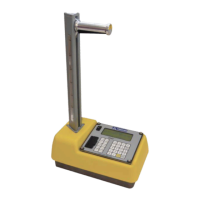
